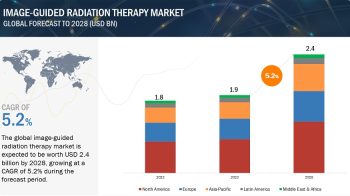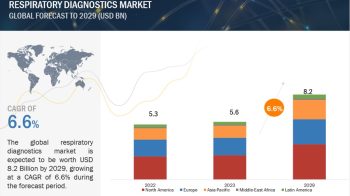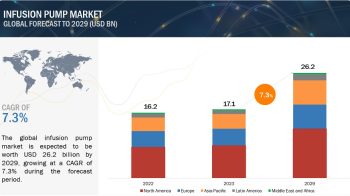Expected Revenue Surge:
The global microscope software market size is projected to reach USD 1,021 million by 2025 from USD 567 million in 2020, at a CAGR of 12.5% between 2020 and 2025.
Major Growth Influencing Factors:
The growing availability of funding & support for R&D in the area of microscopy, a broad application base (since microscopes are used widely in a range of fields, such as semiconductor, life science/healthcare, aerospace, and material sciences), technological advancements in microscopes & microscope software, and the emergence of new application areas is driving market growth.
Overview:
This market research study involved the extensive use of secondary sources, directories, and databases to identify and collect information useful for this technical, market-oriented, and financial analysis of the global microscope software market.
In-depth interviews were conducted with various primary respondents, including key industry participants, subject-matter experts (SMEs), C-level executives of key market players, and industry consultants, among other experts, to obtain and verify critical qualitative and quantitative information and to assess market prospects. The size of the microscope software market was estimated through various secondary research approaches and triangulated with inputs from primary research to arrive at the final market size.
Download PDF Brochure@
https://www.marketsandmarkets.com/pdfdownloadNew.asp?id=89006739
Driver: Technological advancements in microscopy software & microscopes
Technological advancements in microscopy include digitization, live-cell imaging, super-resolution, and high-throughput methods. These advancements serve to reduce product and test costs. Moreover, recent developments in microscopes include expansion microscopes, scanning helium microscopes, multi-view microscopes, and integrated microscopy workflows. Another significant trend in this market is digital microscopy, which offers enhanced image resolution with greater precision, leading to fewer distorted images and better viewing of samples.
Restraint: High cost of microscopes and software subscription
Owing to technological advancements, there has been a shift in the usage patterns of microscopes. Conventional microscopes are gradually losing their market to high-end microscopes such as electron microscopes, scanning probe microscopes, and digital microscopes due to their advanced features, higher resolution, and magnification power. However, these microscopes cost between USD 25,000 to USD 2 million, which is a major factor limiting their adoption in hospitals, pathological laboratories, and small-scale industries.
Challenge: Availability of open-source microscopy software
The availability of open-source software is an important challenge for this market. Any programmer with access to the software can inspect and improve that program or, if required, can fix any issues as needed. In contrast, most software solutions available in the market are closed-source and proprietary—and, more importantly, expensive where open-source software is usually free. Some open-source confocal microscopy analysis solutions—available freely—are ImageJ/FIJI, Cell Profiler/Cell Analyst, Neuronstudio, Volume Integration and Alignment System (VIAS), and L-measure. Most small-scale end-users, academic institutes, and research centers show a high preference for open-source solutions, which directly hampers end-user demand for licensed closed-source software.
Opportunity: Emerging Markets
Developing countries, including BRIC, offer significant growth opportunities for players in the microscope software market. Government funding for R&D in advanced microscopes and software has increased considerably in these countries. Due to the low manufacturing cost and higher production volumes, these countries will further require advanced microscopes along with enhanced software to compete in the international market. The growth of their life sciences, semiconductor, and automotive industries will also support their demand for microscopes and software.
North America accounted for the second-largest share of the global microscope software market in 2019 and is likely to remain an important region for manufacturers to concentrate
North America (comprising the US and Canada) accounted for the second-largest share of the global microscope software market in 2019. North America is a mature market for microscope software. The major players operating in the microscope software market, including Danaher Corporation and Thermo Fisher Scientific, have a strong presence in North America with a wide customer base and established distribution channels.
The penetration of advanced microscopy systems and software such as electron microscopes, digital microscopes, and confocal microscopes is significantly high in various end-use industries in this region. These companies are actively involved in research to expand the applications of correlative microscopy in materials science and geology in the region and contribute towards its growth.
Request Sample Pages@
https://www.marketsandmarkets.com/requestsampleNew.asp?id=89006739
Key Market Players
Some of the key players include Danaher Corporation (US), Carl Zeiss AG (Germany), Oxford Instruments plc (UK), Nikon Corporation (Japan), Olympus Corporation (Japan), Thermo Fisher Scientific (US), Hitachi High-Tech Corporation (Japan), JEOL Ltd. (Japan), Scientific Volume Imaging B.V. (Netherlands), arivis AG (Germany), DRVISION Technologies (US), Media Cybernetics, Inc. (US), Gatan, Inc. (US), Basler AG (Germany), Nanolive SA (Switzerland), Nion Company (US), and Object Research Systems, Inc. (Canada).


